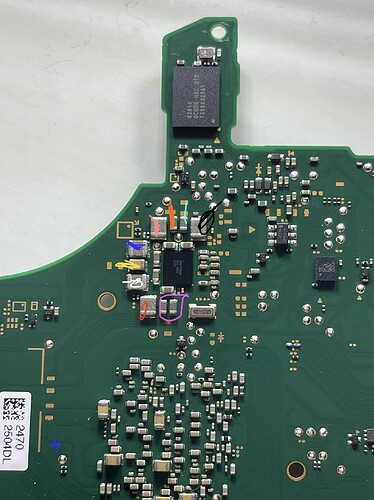so 24.9 kilohms which is fine. This means you should be fine in attempting to dump the contents on your unpatched switch via Hekate (though make sure you understand about update fuses and the like prior, if this is relevant in your case) - That being said it’s a bit pointless even bothering trying just yet given the mainboard faults. Also your EMMC module looked fine in the picture and the previous image was just trick of the camera so no worries.
checking this topic here
Which is a lite board which uses the same SoC as your board, he’s getting reading in the megaohms on his 1V35PDR. So I think this pretty much confirms the fault in your case.
So from your image,

Remove the inductor top left (peach) and the inductor top right (black) and then measure the resistance to ground on all four pads. ![]() this will give us a better indication if it’s the PMIC at fault or the SoC, sorry to say I think it’s going to be the SoC
this will give us a better indication if it’s the PMIC at fault or the SoC, sorry to say I think it’s going to be the SoC ![]() but you never know
but you never know